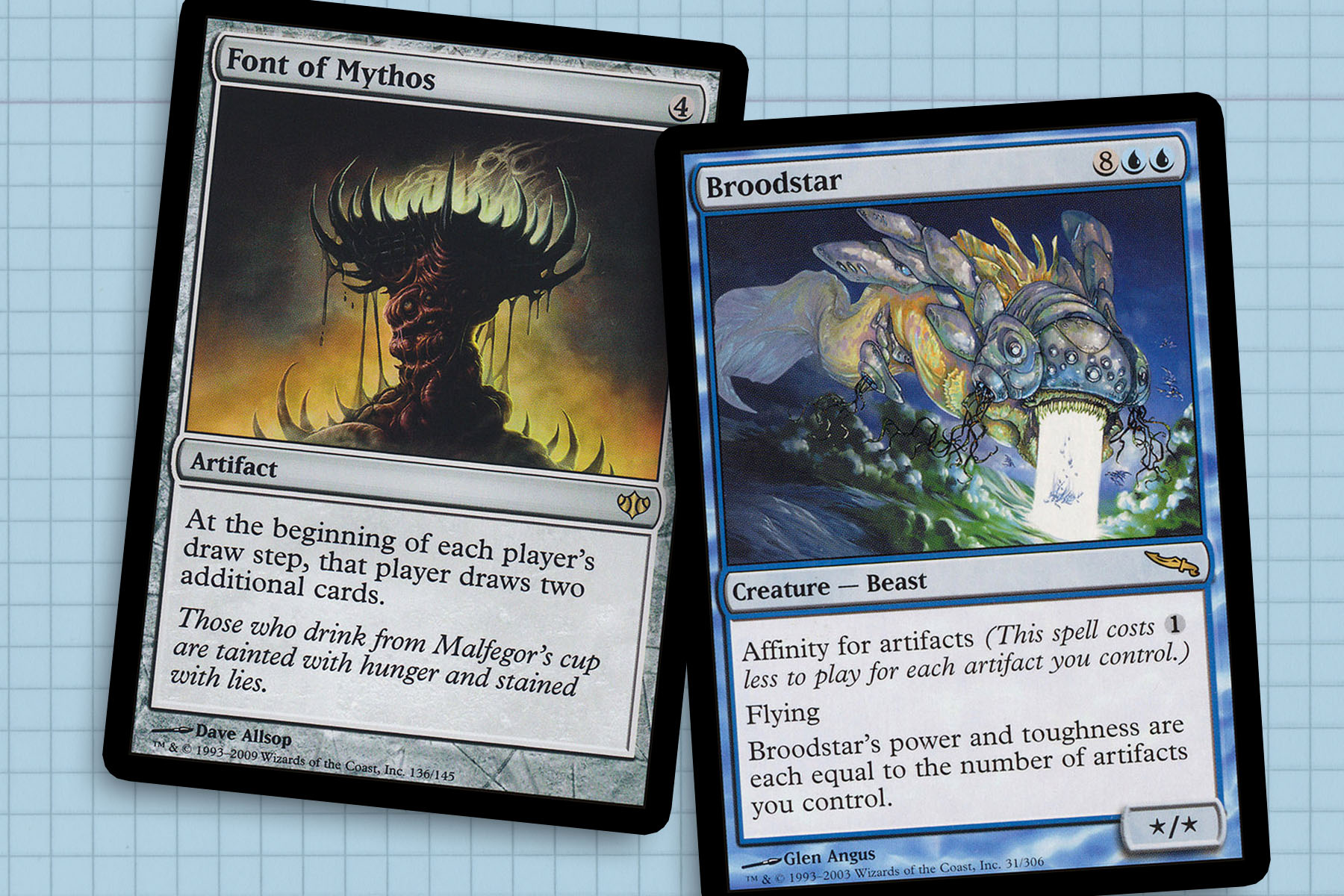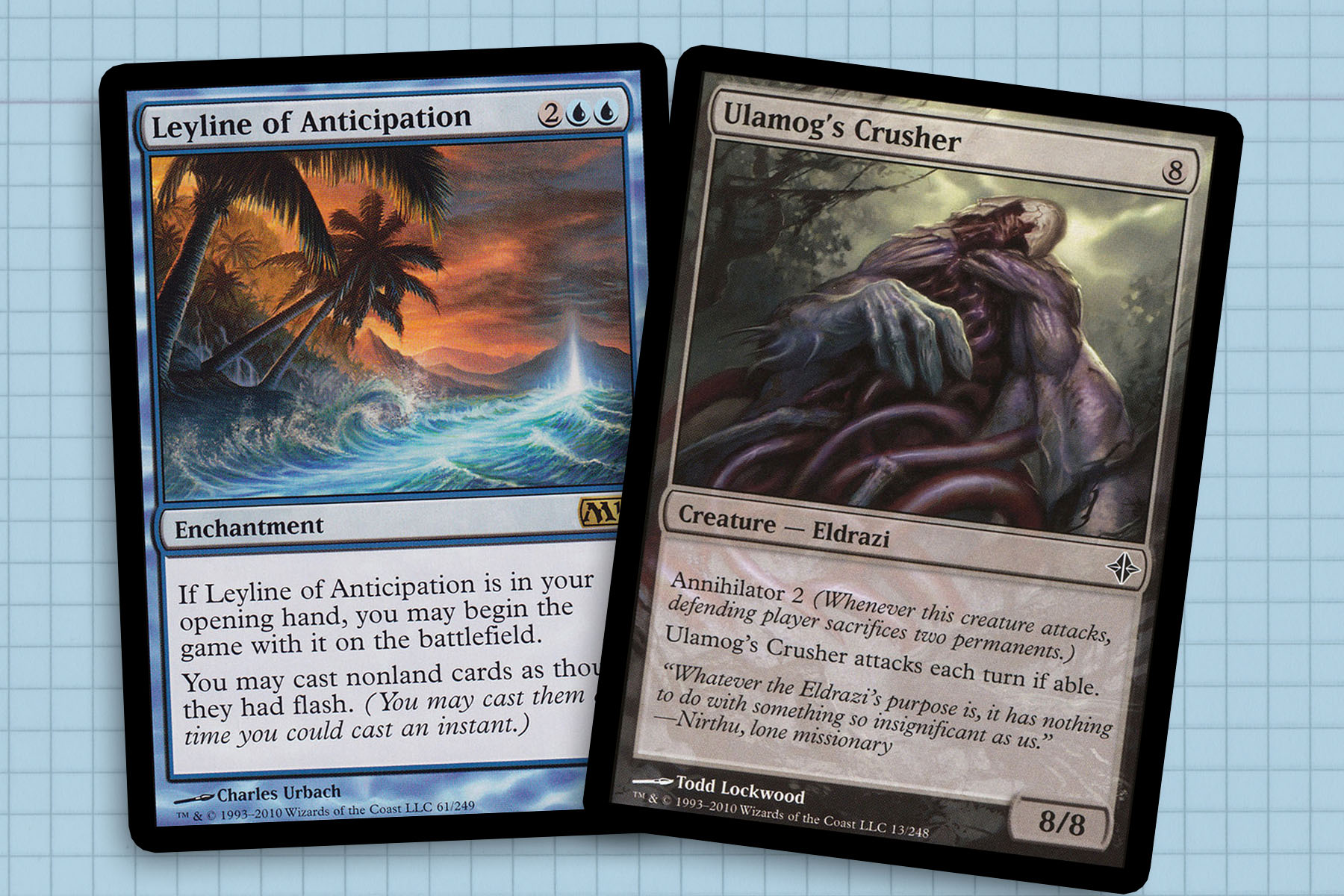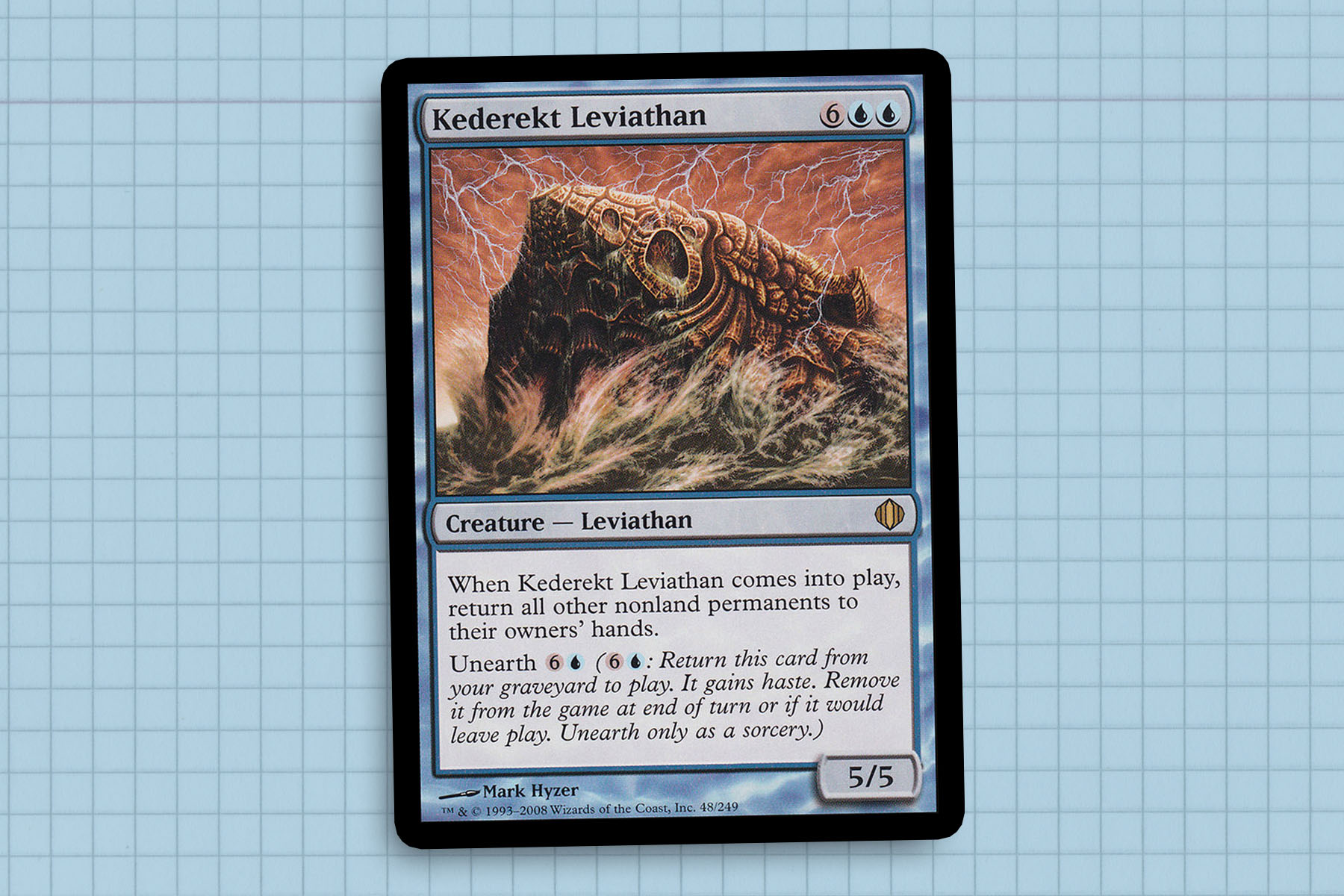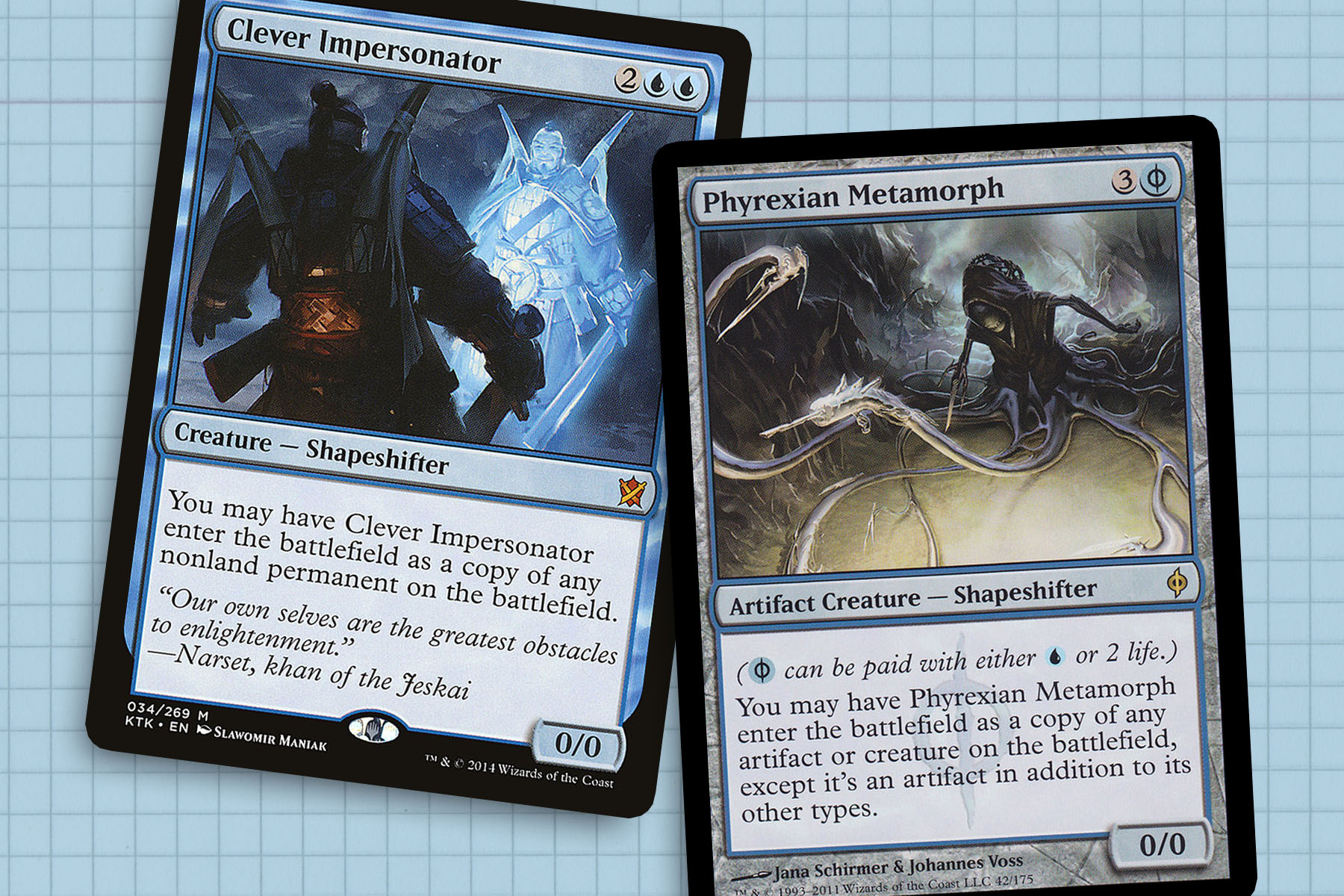Believe it or not, I wasn’t always great at building Commander decks. While I still look over decklists for ideas whenever I start researching a new deck, a few years ago I was far more likely to see card recommendations as auto-includes without considering whether they were really the right choice for me.
Nothing I have ever built has been more of a soulless by-the-books attempt at netdecking than my “build” of Braids, Conjurer Adept. As I’ve looked back on it, I’ve seen many mistakes I’ve tried to overcome as I’ve gotten better at Magic. The number of mana sources was too low, I didn’t give any attention to synergy, and was too lazy to inject some originality into my deck. But while reviewing my past mistakes, I unintentionally reignited my love for one Ms. Blue Braids.

Just Don’t Die First
As I was getting my Commander sea legs in 2011, it took me far longer than I care to admit to find that sweet spot for deck building with 99 cards. My main goal was not to be the first one out of the game. I wanted to explore a deck archetype I had not seen much of before starting Commander: the group hug deck. My one gripe with the archetype that had deterred me was that group hug decks usually lacked a way to win on their own. And while I was not above supporting other players long enough to distract them from my threat status, I wanted the ability to win, even if only on my own misguided terms.
From the beginning, I wanted to play powerful spells without being the main target of the rest of the table. With that objective in mind, It didn’t take me long to find Braids, Conjurer Adept. The biggest appeal at the time was the quirkiness of the deck—Braids could do weird things with unconventional cards and propel the game past the early stages into the endgame quickly. Additionally, since most of my spells would come at a very reduced cost, that left my mana open for counter magic or instant-speed card draw that I hadn’t always got to take advantage of before. As I dove into deck construction, was excited by the cards I uncovered. I was introduced to Font of Mythos and Ixidron, cards that were not on my radar at the time but did atypical things.

Biggest Gun at the Gun Fight
One of the biggest setbacks of coming to a table with Braids, Conjurer Adept is that you run the risk of being outclassed during the first pass of the table with Braids in play. I certainly ran into this, most notably when the player directly following me put Serra Avatar into play and equipped it with Chariot of Victory. I can never forget the shame when I promptly died on the spot. There is subtlety to playing with Braids, and mind games you can play on the rest of the table. If people know you’re running her, they may keep sketchy hands that have something bomby but few lands and nothing else to do, because they expect that they will get at least one free permanent. Of course, you can (and often should) subvert expectations and wait a few turns before casting Braids, creating awkward starts for unwitting opponents.
You should come prepared with Vedalken Orrery, Leyline of Anticipation, and Winding Canyon, so that you can cast Braids just before your turn and be the first to benefit from her. It’s even more important to pack your deck with the biggest creatures you can. My early days with Braids were fresh off of Zendikar and Scars of Mirrodin block, so we had eldrazi, Blightsteel Colossus, and Jin-Gitaxias, Core Augur to work with.
Remember that you can also sneak in more than just creatures. Corrupted Conscience or Volition Reins can be very helpful for grabbing anything that might outclass your board, and Akroma’s Memorial will ensure that your creatures are naturally better than the rest of the table. When you want to be the only one playing with the super toy that is Braids, you can pack Erratic Portal, Crystal Shard, and Barrin, Master Wizard to keep Braids out of play on other people’s turns.

Living the Best Life
There was something so uniquely fun about Commander in the early 2010s. Maybe the format was more casual, or I was innocent from not seeing the ravages of the arms race. I miss playing decks that bluntly shoved the game into the later phases as early as turn two with Sol Ring. The real fun came from subverting expectations by sneaking out Kederekt Leviathan to reset everyone’s board during Braids’s first activation.
I’ve never been one to keep track of my wins, so I don’t know if ever had a winning record with the deck. But I remember taking pride in how often I revealed Braids and the other three players at the table revealed extremely popular generals from Shards of Alara or Commander 2011 at the opening of the game. With the metagame known between the other players, I was often able float under the radar and surprise the rest of the table with giant monsters.
Since blue doesn’t tutor for creatures or enchantments well, there was a good amount of variety to how each game played out. This meant that I enjoyed playing for longer than I might with other decks. The deck was tolerated for longer than most other decks I played—Ertai, the Corrupted and Nekusar the Mindrazer were in rotation during her lifetime—because it wasn’t formulaic and often lead to more dynamic games for all players involved. Yet as much as I love this deck, I knew that I would not play it forever.

Downward Trajectory
I think some of the appeal faded away as I couldn’t disguise myself from being a threat to my established playgroup. I also grew out of favor with mono-colored decks. But now as I think back on that time, I realize that I probably also pulled punches with the power level of the deck. I wanted to play fair and friendly, so I stacked my deck with too many threats that required a lot of set up to stay threatening.
Sadly, blue does not have a lot of access to haste, trample, or menace. I had to rely on threats like Deep-Sea Kraken that hit the battlefield with potent evasion and value engines like Consecrated Sphinx. I think in modern-day Magic Braids might be a good candidate for a resurgence. We have a lot more formidable threats for a mono-blue deck to equip itself with. Heck, most of my time piloting the deck was in a pre-Cyclonic Rift world. In my early days, I was packing Great Whale, Inkwell Leviathan, and Ulamog, the Infinite Gyre as some of my prime threats. But now Emrakul, the Promised End, Nezahal, Primal Tide, and Void Winnower might be more appropriate.
Something can also be said for growing as a deck builder, finding my groove and identifying the play styles I enjoy the most. Excuse my failing memory, but I’m pretty sure I was using spells Rush of Knowledge and Puca’s Mischief. These are fine cards, but not economical in a deck that could have been doing far more with its resources. Now I would lean more on the Clone variants like Spark Double, Clever Impersonator, and Gigantoplasm to let my battlefield be the best of all the options around the table. By extension, I would want Saheeli’s Artistry and Stolen Identity to do similar things, while comboing with Vedalken Orrery and Leyline of Anticipation.
After this reflection, I have to admit that I really miss Braids. While she definitely asked a certain amount of you during deck construction, she was open-ended enough that no two Braids decks inherently look the same. As an experienced player, I have to admit that I long for the days of the open-ended generals. The last few years have been a good time for players looking for non-linear strategies. For every Elenda, the Dusk Rose or Arcades, the Strategist there’s something like Jodah, Archmage Eternal, Massacre Girl, or Muldrotha, the Gravetide to make your own. My advice this week: go out and build something non-linear for your next deck.
Ryan Sainio is a Graphic Designer who writes about EDH and the EDH community. He has been playing Magic: The Gathering since 7th Edition in 2002 and values flavorful and fun gameplay over competitively optimized decks.

